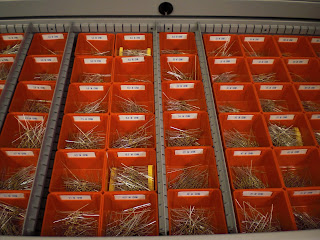We started off the day with ecologist Julie Simpson, who taught us about the components of water and effects of urbanization on watershed areas. Components of water that automatically came to mind included: minerals, dissolved gases, ions and salts, metals, bacteria, and algae. But Julie told us about another category of materials found in water that has only recently gained much attention from researchers: PPCPs - pharmaceutical personal care products (such as lotions, sunscreen, medicine, hormones, etc.). PPCP levels are difficult to measure, and as a result, their effects on wildlife are also difficult to size.
Later, Julie took us out to the Charles River (Sailing Pavilion) to test the water for salinity, turbidity, pH, dissolved oxygen content, and nitrogen content. I learned to use a Sechi disc (for turbidity), a DO meter, and other tools for water testing. Surprisingly, Charles River water, though murky, was quite fresh and contained almost no nitrogen.
In the afternoon, Cole and I helped sort Ohm resistors in the ocean engineering lab (OETL). We had to first figure out how the color coding on the resistors works, and we both had a EUREKA moment we finally figured it out. Basically, you match the color of each band with the number in a color chart, then multiply by the 'multiplier' indicated by the final band. Sorting Ohm resistors seems like a rudimentary job, but it was far more difficult than it seemed!


No comments:
Post a Comment